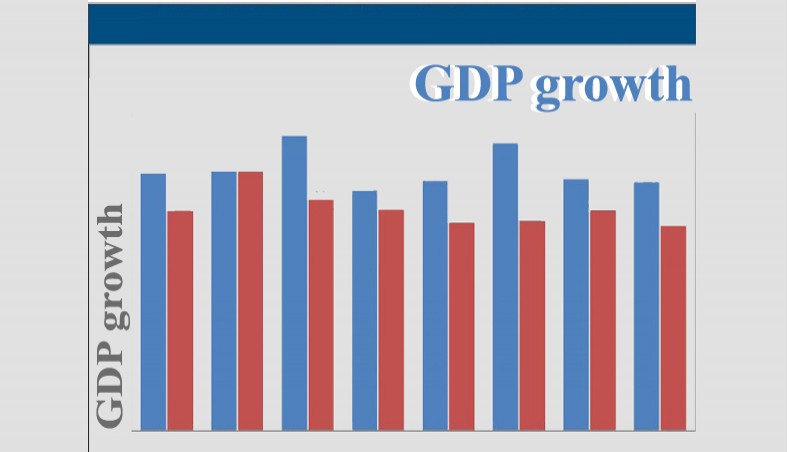Indicators mismatch GDP growth claim
The estimated GDP growth of 7.65 per cent in the outgoing 2018 financial year comes to be mired in controversy as the government growth rate claim does not match economic indicators in Bangladesh.
Economists and experts questioned the estimation and quality of growth saying that such higher growth was not possible with the present rate of investment and job creation.
Private investment grew very marginally, job creation in industrial sector was nominal while real labour income declined in the fiscal, they said.
Growth in export and remittance earnings was also not consistent with the claimed higher rate of growth while banking sector continued to suffer with rising non-performing loans and scams in the year, they added.
According to the Bangladesh Bureau of Statistics, the country’s economic growth is expected to be 7.65 per cent in FY 2018 following an increase in growth in agriculture, manufacturing, power, construction, wholesale and retail trade, public administration and defence.
The bureau usually finalises the calculation of the gross domestic products in October every year.
This was the fourth time in a row the GDP growth was claimed to exceed 7 per cent mark in the country.
Like previous years, experts and economists differed with estimation as well as the quality of growth in this year also.
Research organisations and global agencies like Centre for Policy Dialogue, World Bank and Asian Development Bank stated that provisional GDP growth was found to be higher than expectations and economic reality.
According to the bureau, investment was projected to increase by only 1 percentage point to 31.5 per cent of GDP in FY2018 from 30.51 per cent in FY17 due mainly to the spurt in public investment.
Private investment as a share of GDP was estimated to increase by only about 0.15 percentage points to 23.25 per cent in FY18 from 23.10 per cent in FY17.
‘Public investment and GDP figures will need to be revised when the GDP growth estimates will be finalised after the actual annual development programme expenditure figures for full fiscal year become available,’ CPD said in its latest report on the state of the Bangladesh economy in FY18.
The think-tank said that high growth in leather and related products, pharmaceuticals and medicinal chemical, textile and food products was not reflected in the export performance.
Despite the high GDP growth, enough number of jobs was not created in the industrial sector, CPD commented.
The claimed 13.18 and 11.99 per cent growth in manufacturing and industrial sector respectively was also not supported by data on job creation and investment, it said.
CPD distinguished fellow Mustafizur Rahman in the past week told New Age that experts and research organisations usually accepted the final estimation of the bureau as no other agency had the authority or capacity to estimate the GDP growth.
Debate takes place as the bureau estimation is not consistent with prevailing economic reality, he said, adding that the estimation also did not match with the estimation of research organisations.
He said that it seemed that economy would not grow by 7.65 per cent if data on investment, credit growth, job creation, industrial productivity and other indicators for the first six months was taken into consideration.
Public investment usually takes time to crowd into private sector and bring benefit to the economy, he said.
The World Bank in its Bangladesh Development Update, released in April 2018, said that Bangladesh’s potential GDP growth rate or long-term capacity of growth was between 6.5 per cent and 6.6 per cent for the year.
World Bank country lead economist Zahid Hussain recently said that there was lack of substantial evidences of projected growth for some sectors, particularly in manufacturing and private consumption.
Growth in employment generation of 2.2 per cent, nominal labour income of 2.7 per cent and slower remittance than 2016 did not support the growth in real consumption, he said.
Impact of the economic growth on poverty reduction also narrowed down as inequality in the country increased despite higher growth over the years, he said.
Former interim government adviser Mirza Azizul Islam said that though the overall GDP growth of the country was satisfactory, government’s claim of GDP growth was not consistent with data related to investment, revenue mobilisation and export earnings.
Growth in revenue mobilisation dropped in July-April period of this year from that of the same period of the past year.
Though export earnings grew by 6.33 per cent in July-March of the year, it fell short of the target by 0.28 per cent, he said.
Banking sector continued to suffer due to rising non-performing loans along with scams and irregularities, he said.
Higher private sector credit growth also did not reflect investment in the year, he added.
News Courtesy: www.newagebd.net











